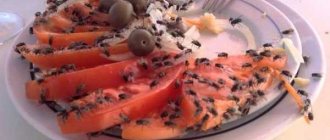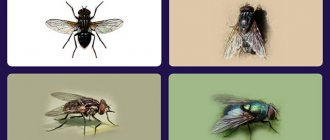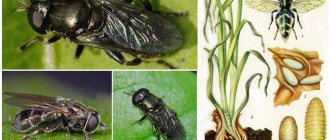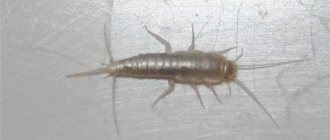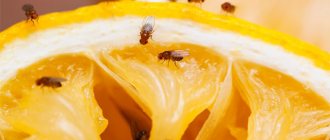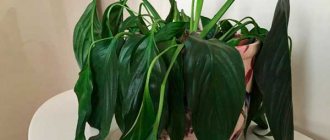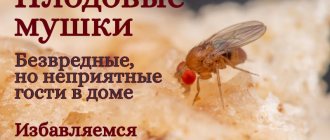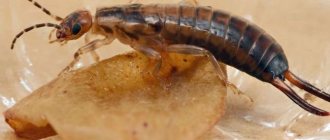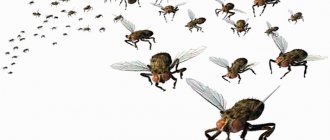Views: 1,308
Sewer moth fly
Sometimes in the house you can observe the appearance of small flies that look like small butterflies. They grow in places where there is high humidity . Most often this is a bathroom, toilet, kitchen. In apartment buildings and private buildings, they can also be found in basements and other similar poorly ventilated places where excess moisture accumulates. These are butterflies, or sewer flies .
These insects do not pose a direct threat to human health and life . However, their appearance is still annoying. With strong reproduction, butterflies form a whole swarm. They fill the living space, clinging to the ceiling and walls above their habitat. What kind of insects are these, why they appear in the house and how to get rid of the butterfly , we will tell you in this article.
What kind of fly is the sewer butterfly?
Butterflies are the closest relatives of mosquitoes - small dipterous blood-sucking insects. However, unlike them, butterflies do not feed on blood. They are herbivores . They prefer rotting plant remains, accumulations of bacteria and microscopic fungi. From this point of view, they are much less harmful than their carnivorous relatives, who are capable of transmitting pathogens of serious diseases. Therefore, as a rule, they are not classified as dangerous insect species .
Butterfly photo from the side
However, they are still annoying. What do these winged arthropods look like? Outwardly they are very attractive. Miniature, up to 4 mm in size, tiny “butterflies” . They have characteristic oval wings that are large for their size. Body color is dark, grayish-brown. Sometimes graphite black.
The entire body of butterflies is heavily hairy , which increases their resemblance to moths. The legs are thick and short. On the head there are long, clearly visible, feathery antennae. In general, unlike many other insects, they do not look repulsive. Quite cute midges.
Description and appearance of midges
Small (less than 2 mm in size) flies are black in color. The leaf-shaped body and wings are covered with hairs, which makes the insects look like moths. In adults, long antennae can be seen on the head.
Butterfly midges fly poorly and move indoors by crawling. They become active in the evening. During the day, sitting on the walls, they try to remain invisible.
The life cycle of sewer midges is short - only 2 weeks. Half of this time is devoted to the development of larvae, and this happens in septic tanks and drainpipes. This is where the caterpillars pupate, wrapping themselves in a thin film. The stage of transition into an adult takes from 20 to 40 hours.
Attention! Mature flies fly out of the cocoons, ready to immediately lay eggs. In one clutch there can be from 30 to 100 pieces.
In view of this peculiarity in the behavior of insects, it is difficult to determine exactly when butterflies appeared in the house.
Appearance
Where do sewer flies live?
Butterflies that appear in human homes are synanthropic insect species. This means that the most favorable conditions for their life are created next to people. Basically, two conditions are important for sewer moths - humidity and organic debris on which they feed. Reduced illumination up to complete darkness (as in basements) and cool air are welcome. That is why the massive and active appearance of these insects can be observed, as a rule, in the off-season .
Butterflies in apartments breed most often in drains or in clogged places with constant humidity . Therefore, their appearance often indicates a violation of sanitary and hygienic standards in the home. This is what you need to pay attention to first in case of their invasion.
Causes of sewer flies
Butterflies breed in damp and warm places: in basements, attics, in bathrooms, showers, and toilets. If most insects suffer from increased dampness, then for flies it is vital.
Another condition for their existence is still, moist air. Often, butterflies appear in rooms where air exchange is disrupted: moisture vapor accumulates, and there is not enough fresh air. They can be found especially often in bathrooms, where they penetrate through openings in sewer pipes and along water risers.
Butterflies usually do not scatter throughout the premises, but settle near the site of infection. They are attracted to trash cans, clogged drains in sinks, and accumulation of moisture in various places. It is not uncommon to see flies in flower pots as they love moist soil. Sometimes they are mistaken for food or ordinary moths, the larvae of which gnaw cereals or spoil clothes. But this is not true, flies do not touch clothes and interior items.
Butterflies reproduce intensively in warm conditions, where food is available. Sensing the smell of food, insects crawl into the food. Therefore, where sewer flies appear, products should be kept closed.
Insects do not suck blood and do not attack people, but they pose another danger:
- From the sinks they move to the kitchen table and crawl on the food there. There are a lot of germs and dirt on their body and paws, which they contaminate food with.
- Butterflies live in colonies that nest on walls and ceilings. It is dangerous to bathe a child in a bathroom with too many sewer flies - insects can fly into his eyes or mouth.
- Spiders and other nasty insects feed on butterflies and their larvae. They also appear in an apartment where there are flies.
- Insect infestations cause an allergic reaction in some people.
How do butterflies develop?
Adult insects may not feed. However, the larvae need decaying remains of plant organic matter . They can be found in abundance in sewers and other similar places. There, the adult insects lay their eggs, which hatch into tiny larvae after a couple of days . Within a week, the worm-like larva turns into a miniature fly. After another two weeks, the insect reaches an adult state in which it is capable of producing its own offspring.
Thus, in just over three weeks, sewer flies go through the entire development cycle and turn from eggs into sexually mature individuals. At the same time, butterflies are quite prolific. One clutch of eggs can contain up to 100 young . Of course, not all of them survive to adulthood. However, those who do survive are enough to quickly increase their population if this is not resisted.
Adult butterflies are usually quite lazy . They don't fly much. And if they do fly, it is for very short distances. They mostly sit on walls near their breeding sites.
We exterminate flies in the bathroom using sprays and poisons
In cases of particularly active drainage flies, the following remedies will be useful to you. They perfectly complement traditional wrestling methods and professional chemistry. Such insect development limiters, aerosols and poisons can be perfectly combined with other existing developments. What else do insecticide manufacturers offer us?
Aerosol Raid
This insect activity regulator, like similar products, is a universal chemical. They can be used against ants, beetles, midges... if these creatures settle in some secluded places. The main feature of limiting aerosols like Gentrol Aerosol Insect Growth Regulator is their ability to penetrate the trickiest insect dens! A familiar picture: hundreds of ants crawl out of a small crack on the wall... Or small bugs begin to crawl out from under the floorboard at night! Just spray this “entrance” and the job will be done. The complex chemical formula literally “sterilizes insects.” Adults will not die, but will spread the “poison” throughout their nest and significantly slow down reproduction. A similar principle applies to drainage flies.
It dissipates into a light foam that fills the space like a building sealant. However, then you can easily wash it off and use the drain for your pleasure.
User Joe thanks the product for the complete elimination of flies and its long shelf life. And Kristine calls it the best “seasonal remedy” for insects. And all existing complaints relate to the fight against other insects: for example, water beetles, which many confuse with cockroaches. It turns out that the spray fights effectively against our patients.
Price: 169 rub.
Aerosol Raptor
Before us is a kind of mix between an aerosol and a drain gel. This liquid also uses natural microorganisms that destroy signs of decomposition, harmful bacteria, odors and insect larvae. True, it is used more often for “external use”. After all, the main function of this mixture is the destruction of harmful odors. Yes, yes, the developers managed to combine a cosmetic effect, pest control and prevention.
The spray can be used on walls, floors, carpets and wall voids, basements and trash containers. And also garbage cans, bathrooms, compost heaps and technical drains. They gave it a whirl, the mixture covered the “territory of war” in an even layer and began to do its job. Users claim that if the instructions are followed correctly, it can kill flies. Yes, the destruction efficiency is not as high as that of concentrated gels, but what versatility!
In general, this substance cannot be recommended as the main tool in the fight against “winged girlfriends”. But to maintain healthy home hygiene, especially when living outside the city, this thing will definitely come in handy.
Price: 248 rub.
How to get rid of a butterfly?
Butterflies in the bathroom or kitchen are the first sign of clogged drains. Therefore , the first thing to do in this case is to clean the pipes . It doesn’t matter how – mechanically using a plunger or using chemicals. Both methods allow you to remove butterfly larvae from their habitats.
Adult insects can be easily gotten rid of with any insecticidal aerosol or simply by killing them mechanically. Both highly toxic products such as dichlorvos and specially designed aerosols against mosquitoes and other flying insects (Mosquitol, Raptor and others) are suitable as a spray. It is quite appropriate here to use plates and fumigators, as well as mosquito coils .
In any case, it is important not to be indoors at this time . Especially when using highly toxic drugs. Upon returning home, the space should be well ventilated. When using fumigators to destroy butterflies, it is not necessary to leave your home. However, windows must be open for adequate air circulation and ventilation.
All this is true both for residential premises and for basements or outbuildings. Such measures may be enough to get rid of butterflies. However, if the infestation of insects is very strong or you do not want to deal with their removal yourself, then contact our disinfection service “Nymphadez” . We will quickly resolve this problem.
How to deal with butterflies
Before you start directly baiting insects, you need to eliminate the causes of their appearance and block the paths through which they entered you. This will not only make any treatment more effective, but will also help prevent the pests from returning.
- If the room where butterflies are infested has been in need of cosmetic or major repairs for a long time, do it.
- Balance heat and humidity levels by using radiators or installing power-controlled heated towel rails.
- Repair all cracks and damage in tile joints.
- Clean the ventilation in the room and install small mesh in it that allows air to pass through but traps insects.
- During the warm season, insert mosquito screens or nets into open window frames.
- Check the integrity of water and sewer lines and, if necessary, repair them.
- Inspect the faucets and plumbing wiring and, if any, repair any leaks.
If butterflies live not only in your apartment, but also somewhere in the house, you additionally need to contact your management company with a request to understand the situation and carry out emergency disinfestation.
In parallel with eliminating the causes of insects, you can begin to select methods and means for exterminating parasites directly in your apartment. How and with what can you fight butterflies?
Prevention measures
In the case of the fight against sewer moths, preventive measures play an important role. Getting rid of a butterfly is not that difficult. It is much more difficult to prevent its re-settlement and reproduction . And to do this, it is necessary to eliminate the causes that contribute to its appearance and create favorable conditions for the life of these insects.
What do we have to do:
. Both mechanical and chemical methods are suitable.
Clean drains regularly and promptly- Do not allow water to stagnate and dampness to form on any surfaces . Immediately remove excess moisture.
- Fix water leaks and plumbing problems in a timely manner.
- Install fine-mesh mesh on the ventilation openings to prevent butterflies from entering from basements, neighbors, etc. It is recommended to do this to protect not only from butterflies. Such measures greatly help to avoid the invasion of cockroaches, bedbugs, fleas, mosquitoes and other unpleasant insects traveling through ventilation.
- Cracks in walls and floors must be repaired . Again, this helps create difficult conditions for survival not only for butterflies, but also for many other much more dangerous parasites.
- It is important that the room is sufficiently heated, ventilated and dried . At all costs, you should avoid high humidity in places where moisture can accumulate.
- Maintain cleanliness and order in the house , eliminating with cleaning agents possible accumulations of plant organic matter in hard-to-reach areas, especially those exposed to water.
On the one hand, they are another unpleasant side effect of high humidity and a signal that proper control measures need to be taken. On the other hand, sewer moths can also feed on this mold. Therefore, in any case, you need to get rid of mold. And as quickly as possible.
Get rid of mold and mildew.
Following these simple rules will allow you to permanently get rid of the butterfly in the house and prevent its reappearance.
Other articles on the topic:
– How to protect yourself from mold: causes and habitats
– Elimination of odors with dry fog
– Mold removal: do it yourself or turn to professionals?
– What is disinfestation? Types of disinfestation.

